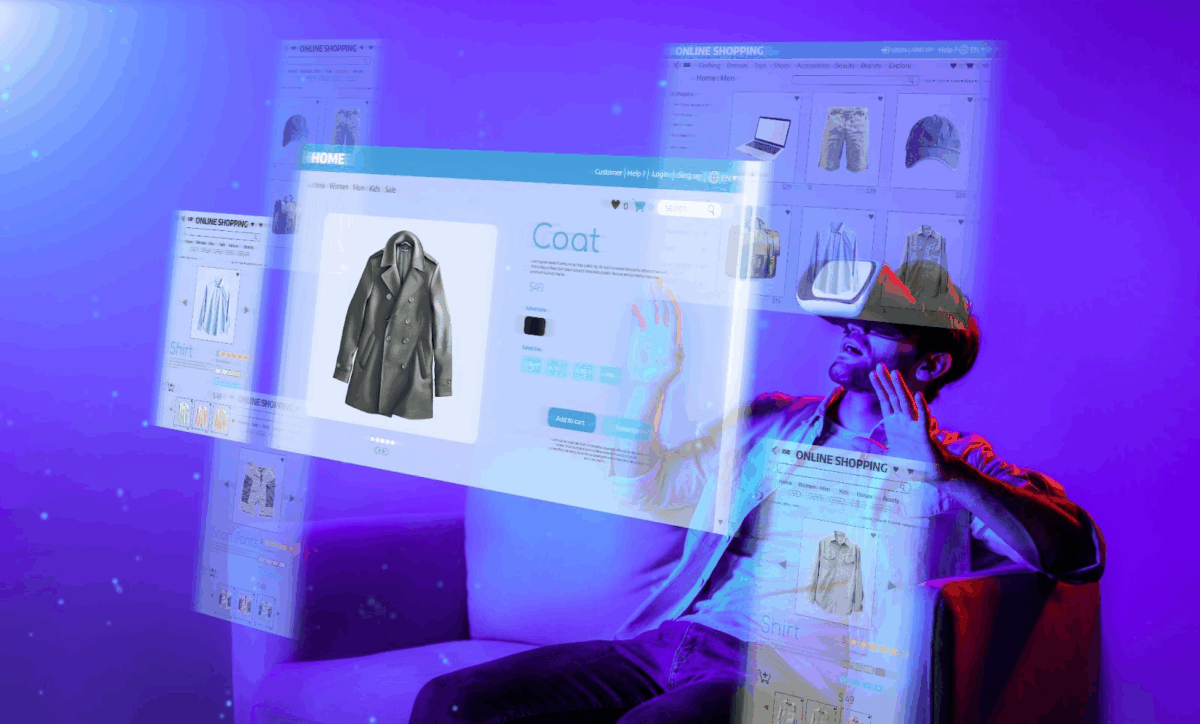The e-commerce area is constantly evolving. You barely get a handle on one thing, and boom, a new technology or shopper quirk throws everything off. So, the question is, “Are you actually ready for 2025?” Those tactics that crushed it last year might not even keep you afloat now. Today’s buyer is tech-savvier than ever. They want a smooth, personalized, and ethical shopping trip – less “buy now,” more “let’s chat.”
To not just exist but own your space, you must be flexible and on a constant learning curve about e-commerce trends that are shaping 2025. How fast can you learn to bend with these online retail trends? The brands that embrace the future of online shopping now are the ones snatching up loyalty, attention, and those all-important dollars down the road. Now, let’s jump to the most recent trends in the e-commerce sphere.
1. AI-Powered Personalization Will Dominate
Forget the hype; “personalization” has been the word for ages. But in 2025, AI is rewriting the rules to suit each customer through hyper-personalization. Those simple “you might like” predictions are over. AI in e-commerce is now crafting seriously unique, custom, personalized shopping experiences for every single visitor checking out your shop.
Now, AI tools are leveled up with insights taken from browsing and purchase histories, location, demographics, and even when someone searches through something on your site. They learn to guess exactly what each buyer might want before they even know it themselves. Get ready for:
- Dynamic Product Recommendations: Picture dropping someone on a page packed with stuff they’re practically guaranteed to buy.
- Predictive Upselling and Cross-selling: Now this is an art. Presenting the right upsell (“you need this too!”) or cross-sell offer at the perfect moment can significantly increase the value of each order. Have you ever wondered why this works so well for the largest e-commerce companies? They examine your browsing and purchase history using machine learning and predictive analytics. They are able to offer recommendations that are not simply arbitrary but also very accurate, intuitive, and actually helpful by knowing your interests and the things that frequently go together. Increased sales and customer pleasure are the results of this accuracy.
- Personalized Content: Consider product descriptions, website banners, and marketing emails that are tailored to your own preferences. This strategy has the potential to significantly increase loyalty. Some businesses are really good at producing this type of material, and it has a big positive effect on their KPIs.
- Advanced Search Refinement: Beyond clumsy or imprecise AI, machine learning will handle the intricate task of providing the most pertinent search results. Customers may now search more efficiently and intuitively thanks to this.
It’s like giving every customer their own personal shopping guru. The better you can do on how AI is changing e-commerce in 2025, the better these unique personalized shopping experiences will deliver crazy high conversion rates and solid customer connections.
2. Social Commerce Becomes a Main Sales Channel
By 2025, consider TikTok, Instagram, Pinterest, and YouTube less as places to post and more as full-blown shops. With social commerce, your customers skip the website, hit ‘buy’ right there, and stay in the app they dig.
How does this all shake out? It boils down to trusting the influencers and the authentic social media shopping trends in 2025. What tactics do you need to take note of?
- Shoppable Posts and Ads: Incorporate direct purchase links into your advertisements and social media postings to streamline the purchasing process and prevent users from ever leaving the platform.
- Live Shopping Events: Respond to inquiries and build rapport with your audience in real time. Sales are increased and excitement is increased by this connection.
- User-Generated Content (UGC): By encouraging users to post their images and experiences, UGC produces genuine content that serves as strong social proof and persuades others to make a purchase.
3. Augmented Reality (AR) for Virtual Try-Ons
The thing that upsets people about online shopping is not actually touching the stuff before you buy. “Will this dress look good on me? Is that couch actually going to fit in my apartment?” Returns kill profits, and shoppers get bummed. Solution: augmented reality for online shopping. Dramatically reducing return rates and making shoppers way more confident. AR in shopping lets people “try before they buy,” right from their couch.
Visual purchases are where it’s at:
- Fashion: Clothing, shoes, watches, and jewelry, what won’t AR allow you to try?
- Beauty: Makeup, hairstyles, and colors.
- Furniture & Home Decor: You can insert realistic lighting fixtures and sofas into your room.
Consider how they all integrate together for success.

4. Voice Commerce Gains Momentum
We live in a world of Siri and Alexa, where voice commerce is growing and shaping the future of online shopping. The businesses that want to kill these best voice commerce platforms of 2025 must act quickly. Principal strategies entail:
- Conversational SEO: Instead of relying solely on conventional keywords, use phrases that people actually use to optimize your content for natural language. Instead of “women’s formal wear,” for instance, think of how someone may say, “Alexa, help me find a special dress for my wife.” This improves your engagement with clients by making it simpler for voice assistants to recommend your products.
- Reordering and Subscription: For regular transactions, let customers use voice queries, such as “Hey Google, order more vitamins.” Customer loyalty is increased and repeat business is encouraged by this convenience.
- Markup for Structured Data: To make it easier for voice assistants to locate and present the appropriate information on your website, use structured data markup. This increases visibility and relevancy by guaranteeing that your products are appropriately featured when consumers make voice inquiries.

5. Sustainability as a Competitive Advantage
Sustainability is now a standard. Consumers care about the planet and want to support eco-friendly brands. Here’s how to adopt sustainable practices:
- Rethink Your Packaging: Use recycled materials or compostable options like mailers that dissolve in water.
- Offer Sustainable Shipping: Provide carbon-neutral or green shipping options, even if they take a bit longer.
- Be Transparent: Share your supply chain information, and use QR codes to show the product’s journey.
6. Mobile-First E-Commerce & One-Click Checkout
Mobile-first design focuses on simplicity and speed.
- Mobile-First: Prioritize what’s important on small screens, like clear, concise content and large images.
- Streamlined Navigation: Use a simple hamburger menu and minimize clutter.
- One-Click Checkout: Implement payment options like Apple Pay or Google Pay to reduce cart abandonment.
7. Data Privacy & Cybersecurity as Selling Points
Data privacy is a top concern for consumers in 2025. Here’s how to protect customer information:
- Be Transparent: Provide a clear privacy policy about data collection and sharing.
- Get Certifications: Display security badges and ensure compliance with regulations like the General Data Protection Regulation (GDPR).
- Use Secure Payment Gateways: Use trusted services like Stripe or PayPal for secure payments.
- Collect Only What’s Necessary: Avoid asking for unnecessary personal information.
- Train Your Team: Ensure everyone is aware of best security practices to prevent breaches.
Case Study: Aroma Country, Bringing Luxury Fragrance Online
Aroma Country, a U.S. artisanal candle and fragrance brand, needed a polished e-commerce site to reflect its luxury aesthetic. Digilite designed and launched a Shopify-powered store with high-resolution visuals, scent filters, a “Build-Your-Bundle” tool, and a seamless checkout. The result? A sensory-rich, mobile-friendly site that mirrors the brand’s craftsmanship while driving sales.
The environment of e-commerce is rapidly evolving. Falling behind is the result of waiting to adjust. Don’t let your company fall behind as others thrive thanks to sustainable practices, individualized experiences, and easy mobile shopping. Start down the path to greater financial success.
For a free consultation, get in touch with us right now. Together, we can develop a plan that will enable your online store to not only endure but also succeed in 2025 and beyond.




